|
|
|
 |

 |
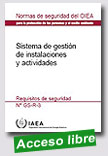 |
Sistema de gestión de instalaciones y actividadesOIEA - Colección de Normas de Seguridad, 2011, 48 p.
El objetivo de la presente publicación es definir los requisitos para el establecimiento, la aplicación, la evaluación y la mejora continua de un sistema de gestión que incorpore elementos económicos, así como elementos relacionados con la seguridad tecnológica, la salud, el medio ambiente, la seguridad física y la calidad, a fin de garantizar que la seguridad tecnológica se tenga debidamente en cuenta en todas las actividades de la organización.
El principal objetivo de los requisitos relativos al sistema de gestión es garantizar que la seguridad no se vea comprometida, examinando las repercusiones de todas las medidas, pero no en el marco de los distintos sistemas de gestión, sino en relación con la seguridad en su conjunto. |
Extraído de:
http://www-pub.iaea.org/MTCD/Publications/PDF/Pub1252s_Web.pdf
|
 |
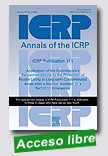 |
Application of the Commission’s Recommendations to the Protection of People Living in Long-term Contaminated Areas after a Nuclear Accident or a Radiation Emergency
The International Commission on Radiological Protection, 2009, 70 p.
In this report, the Commission provides guidance for the protection of people living in long-term contaminated areas resulting from either a nuclear accident or a radiation emergency. The report considers the effects of such events on the affected population. This includes the pathways of human exposure, the types of exposed populations, and the
|
characteristics of exposures. Although the focus is on radiation protection considerations, the report also recognises the complexity of post-accident situations, which cannot be managed without addressing all the affected domains of daily life, i.e. environmental, health, economic, social, psychological, cultural, ethical, political, etc. The report explains how the 2007 Recommendations apply to this type of existing exposure situation, including consideration of the justification and optimisation of protection strategies, and the introduction and application of a reference level to drive the optimisation process. The report also considers practical aspects of the implementation of protection strategies, both by authorities and the affected population. It emphasises the effectiveness of directly involving the affected population and local professionals in the management of the situation, and the responsibility of authorities at both national and local levels to create the conditions and provide the means favouring the involvement and empowerment of the population. The role of radiation monitoring, health surveillance, and the management of contaminated foodstuffs and other commodities is described in this perspective. The Annex summarises past experience of long term contaminated areas resulting from radiation emergencies and nuclear accidents, including radiological criteria followed in carrying out remediation measures.
Extraído de:
http://www.icrp.org/publication.asp?id=ICRP%20Publication%20111
|
 |
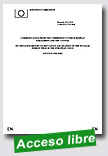 |
1st Situation Report on Education and Training in the Nuclear Energy Field in the European Union
European Commission, 16 September 2011, 9 p.
On 16 September 2011, the Commission adopted the 1st Situation Report on Education and Training in the Nuclear Energy Field in the European Union. Strengthening further the nuclear safety culture throughout Europe remains a priority of our energy policy. The report provides a comprehensive picture of the situation of human resources in the nuclear energy sector in the EU, identifies the current challenges, and presents the spectrum of both current and planned EU, national and international initiatives in this field. |
Staff Working Paper accompanying the document
Extraído de:
http://ec.europa.eu/energy/nuclear/safety/safety_en.htm
|
 |
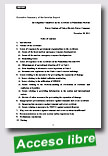 |
The Investigation Committee on the Accidents at the Fukushima Nuclear Power Stations (“the Investigation Committee”) of Tokyo Electric Power Company (TEPCO) was established by the Cabinet decision on May 24, 2011. Its objectives are: to conduct investigation and evaluation for finding out the causes of Accidents at the Fukushima Dai-ichi Nuclear Power Station (Fukushima Dai-ichi NPS) and Fukushima Dai-ni Nuclear Power |
Station (Fukushima Dai-ni NPS) of TEPCO as well as the causes of accident damage; and to make policy recommendations for limiting the expansion of damage and preventing reoccurrence of similar accident.
The Investigation Committee has conducted its investigation and evaluation since its first meeting on June 7, 2011. Its activities included: site visits to the Fukushima
Dai-ichi and Dai-ni NPSs, as well as to other facilities; hearing of heads of local governments around the Fukushima Dai-ichi NPS; and hearing of people concerned through interviews mainly by the Secretariat. As of December 16, 2011, the number of interviewees reached 456.
The investigation and evaluation by the Investigation Committee are still ongoing and the Interim Report does not cover every item that the Committee aims atinvestigating and evaluating. Fact-finding of even some of those items discussed in the Interim Report are not yet completed.
The Investigation Committee continues to conduct its investigation and evaluation and will issue its Final Report in the summer of 2012.
This brief executive summary covers mainly considerations and evaluation of the issues in Chapter VII of the Interim Report, with brief reference to Chapters I to VI.
The Investigation Committee recommendations are printed in bold.
Extraído de:
http://icanps.go.jp/eng/111226ExecutiveSummary.pdf |
 |
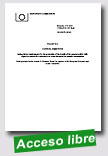 |
Proposal for a Council Directive laying down requirements for the protection of the health of the general public with regard to radioactive substances in water intended for human consumption
European Commission, 27 June 2011, 16 p.
Only a very small percentage of drinking water systems are located in areas that have potential sources of man-made radioactive contamination from facilities that use, manufacture, or dispose of radioactive substances. Drinking water contamination may occur through accidental releases of radioactivity or through improper disposal practices. Water systems that are vulnerable to this type of contamination are |
required to perform extensive monitoring for radioactive contamination to ensure that their drinking water is safe. Yet, there are many regions in Europe where the geological and hydrological features are such that the
presence of naturally occurring radioactive substances is of concern.
Under Community legislation, technical requirements for the protection of the health of the general public with regard to radioactive substances in water intended for human consumption have been finalised for more than five years now, after a consultation process involving the Group of Experts provided for under Article 31 EURATOM, the Committee established under the Drinking Water Directive and the consultation of the Committee of Member State representatives established under Articles 35-36 of the EURATOM Treaty. So far the requirements for monitoring tritium and total indicative dose under Council Directive 98/83/EC have not been implemented, pending the adoption of amendments to Annexes II (monitoring) and III (specifications for the analysis of parameters). Indicator parameters set out in Annex I Part C relating to radioactivity and tritium and the related monitoring provisions in Annex II to Directive 98/83/EC fall within the scope of the basic standards within the meaning of Article 30 of the EURATOM Treaty. As a result, it is justified to incorporate the requirements for monitoring levels of radioactivity in a specific legislation under the EURATOM Treaty in order to maintain the uniformity, coherence and completeness of radiation protection legislation at Community level.
Extraído de:
http://ec.europa.eu/energy/nuclear/radiation_protection/doc/com_2011_385.pdf |
 |
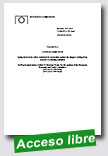 |
Proposal for a Council Directive laying down basic safety standards for protection against the dangers arising from exposure to ionising radiation
European Commission, 29 September 2011, 126 p.
Exposure to ionising radiation results in a health detriment. In normal situations doses are very low so that there is no clinically observable tissue effect, but there still is a possible late effect, cancer in particular. It is assumed that there is no dose threshold for this effect: any exposure, however small, can be the cause of cancer later in life. It is further assumed that the probability of occurrence of a late effect is proportional to the dose. This calls for a specific approach in radiation protection |
based on the three principles of justification, optimisation and dose limitation, which are the cornerstones of the system of protection established many decades ago by the International Commission on Radiological Protection (ICRP).
Euratom legislation has always followed the recommendations of the ICRP. This highly respected scientific organisation has recently issued new guidance on the system of radiation protection (Publication 103, 2007). While preserving the three pillars of the system, the ICRP sets out in more detail the application of the principles throughout any exposure situation and irrespective whether the source of radiation is man-made or natural. Radiation protection indeed covers not only exposures resulting from the operation of radiation sources (planned exposure situations), but also emergency exposure situations, for instance resulting from a nuclear accident, and a range of other situations, in particular those involving exposure to natural radiation sources, termed ‘existing exposure situations’. The ICRP has also updated the methodology for assessment of the effective dose as well as the application of dose limits, in the light of the latest scientific information.
Extraído de:
http://ec.europa.eu/energy/nuclear/radiation_protection/doc/com_2011_0593.pdf
|
 |
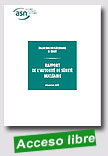
|
Évaluations complémentaires de sûreté - Rapport de l’Autorité de sûreté nucléaire
Autorité de Sûreté Nucléaire, Décembre 2011, 524 p.
L’ASN rend public son rapport sur les évaluations complémentaires de sûreté (ECS) menées à la suite de l’accident de Fukushima. André-Claude Lacoste, président de l’ASN, l’a remis ce matin au Premier ministre.
A l’issue des évaluations complémentaires de sûreté des installations nucléaires prioritaires, l’ASN considère que les installations examinées présentent un niveau de sûreté suffisant pour qu’elle ne demande l’arrêt immédiat d’aucune d’entre elles. Dans le même temps, l’ASN considère que la |
poursuite de leur exploitation nécessite d’augmenter dans les meilleurs délais, au-delà des marges de sûreté dont elles disposent déjà, leur robustesse face à des situations extrêmes.
Lire l'avis n° 2012-AV-0139 du 3 janvier 2012 de l’Autorité de sûreté nucléaire.
L’ASN va donc imposer aux exploitants un ensemble de dispositions et renforcer les exigences de sûreté relatives à la prévention des risques naturels (séisme et inondation), à la prévention des risques liés aux autres activités industrielles, à la surveillance des sous-traitants et au traitement des non-conformités.
L'avis n° 2012-AV-0139 du 3 janvier 2012 de l’Autorité de sûreté nucléaire
Extraído de:
http://www.asn.fr/index.php/S-informer/Actualites/2012/Rapport-de-l-ASN-sur-les-evaluations-complementaires-de-surete-ECS |
 |
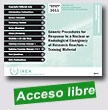 |
Generic Procedures for Response to a Nuclear or Radiological Emergency at Research Reactors - Training Material
IAEA Emergency Preparedness and Response, 2011, s. p.
Under Article 5.a(ii) of the Convention on Assistance in the Case of a Nuclear Accident or Radiological Emergency (Assistance Convention), one function of the IAEA is to assist a State Party or a Member State when requested in developing appropriate training programs for personnel to deal with nuclear accidents and radiological emergencies. These training materials are intended to be used for that purpose and supplement the IAEA
|
publication “Generic Procedures for Response to a Nuclear or Radiological Emergency at Research Reactors (EPR-RESEARCH REACTOR, 2011)”.
IAEA Safety Standards Series No. GS-R-2 “Preparedness and Response for a Nuclear or Radiological Emergency”, which establishes the requirements for an adequate level of preparedness for and response to a nuclear or radiological emergency in any State, contains a requirement “To ensure that arrangements are in place for a timely, managed, controlled, coordinated and effective response at the scene…”. The training material and the publication are intended to assist Member States meet the requirements of GS-R-2 and enhance their preparedness by providing guidance on the response to emergencies at research reactor facilities in Threat Category II and III.
Extraído de:
http://www-pub.iaea.org/MTCD/Publications/PDF/EPR-Research_Reactor_CD/PDF/Introduction.pdf
|
 |
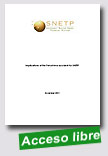 |
Implications of the Fukushima Accident for Sustainable Nuclear Energy Technology Platform (SNETP
Sustainable Nuclear Energy Technology Platform (SNETP), November 2011, 8 p.
SNETP gives nuclear safety the highest priority in its vision and Strategic Research Agenda. European technical safety organizations (TSO’s) are involved in the activities of the platform governance and working groups. SNETP promotes safety related research and harmonization at European level, for current and future generation of nuclear fission technologies. This is the reason why the SNETP Governing Board decided to empowered
|
a Task Group to investigate how the first lessons learned from Fukushima accident could impact safety related R&D orientations and priorities.
In its investigations, the Task Group has concentrated on medium and long term R&D, in particular on the developments, updating and validation of methods and tools for areas which are not considered as enough understand.
The report issued by the Task Group gives high level orientations that will be more detailed by SNETP Technology Task Groups (GENII/GENIII, Cogeneration, and ESNII). This report will be updated as necessary with the outcomes of the European stress-tests for which a final report from the European Commission is expected by June 2012.
On a longer term – several years – the outcomes of the future expertise acquired on the four reactors and fuel pools of Fukushima Dai-ichi site will be very valuable for the qualification and validation of the results of the R&D tasks.
This report shall be thus considered as a very first step of the process but it already catches very important features which are summarized in the here-below document.
Extraído de:
http://www.snetp.eu/www/snetp/images/stories/Docs-Newsflash/Implication_of_Fukushima_SNETP.pdf
|
| |
|
|
|
|
|
|
|
|
|
